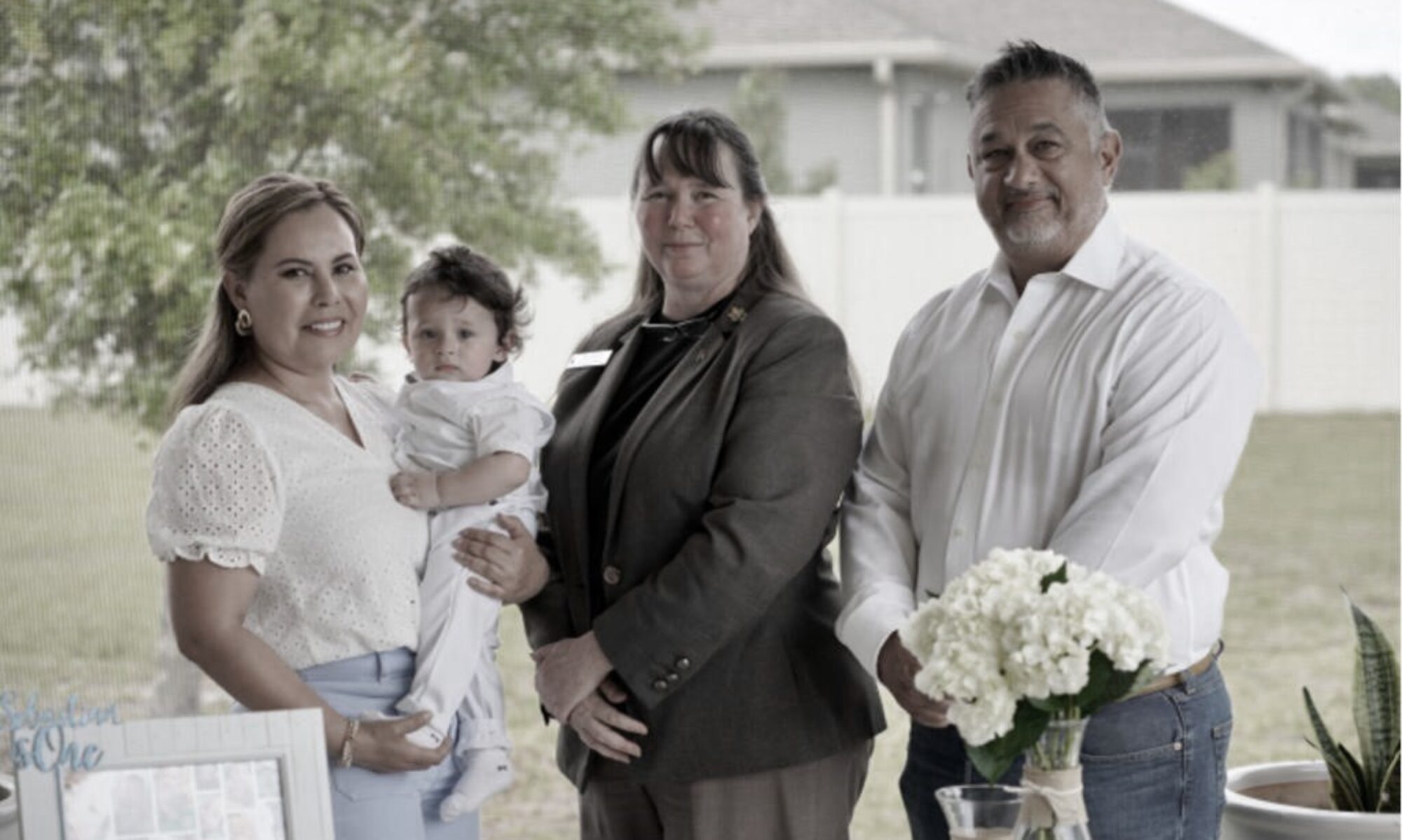Welcoming a child into a family is a momentous occasion, isn’t it? And we humans commemorate important moments in our lives with rituals and ceremonies. A wedding. Graduation. Funeral or Celebration of Life. Ceremonies mark that moment in our memories and make them extra special. We take photos. We talk about the day for years to come.
In many Christian and Protestant traditions, babies are baptized. At this ceremony, they welcome the child into the faith and family, and some may name “Godparents” to serve as moral guides and alternates should the parents die before the child becomes an adult.
What if you don’t have a tradition where babies are baptized? Or if you are not religious at all, or have mixed beliefs and traditions in your family? Can you still have a beautiful ceremony of welcoming?
Absolutely.
The many types of naming & welcoming ceremonies
A welcoming or naming ceremony can be for
- A new infant – performed at the reveal ceremony, at the hospital, or soon after coming home
- On a special day such as a six-month ceremony, at the first birthday, or some other important milestone for the family
- A formal welcoming for an adopted child of any age
Transgender Naming Ceremonies
Another type of meaningful naming ceremony is a Transgender Naming Ceremony, sometimes called a Butterfly Ceremony. These celebrate someone’s identity, commemorate their name and gender, and provide a positive foundation for family and friends to support their loved one’s journey and transition.
Pet Naming/Welcoming Ceremonies
You’ve got a new fur-kid being added to your family! New pawprints on your heart. A ceremony can help formalize the responsibility of all family members (such as children involved in the care of the animal) and provide a wonderful memory of that animal coming into your lives. Many of us feel that pets are family – i’ve seen scrapbooks, albums, and even Facebook pages for pets. Wouldn’t a welcoming ceremony be a wonderful way to launch that relationship?
A recent ceremony example
A family i recently served had a blend of secular and traditional-religious members. They wanted to honor everyone by incorporating a secular baptismal-style ritual into the ceremony. They felt a formal ceremony and ritual would be meaningful for them as parents, but also for the Guideparents to be officially named and make their pledge to serve and for the family to participate somehow in the ceremony.
The custom script included history of the child’s name and why it was chosen, a reading of a letter from the mother to her child, and a reading of a poem. In the water ritual, we passed a vase of water. As each person held the vase briefly, they were to think the child’s name and make a silent promise to him that they would keep throughout his life. When the vase was passed back to the front of the room, i applied some of the water to the child’s head and said, “(child’s name), this water represents the love and commitment of everyone here for you today.”
Your Ceremony will be uniquely yours.
You may find that there are so many options out there for namings that it can be overwhelming. And if you’ve never been to a naming ceremony, you may not know what to expect. When you talk to your celebrant about your potential ceremony, we’ll ask questions that will help us make recommendations that will be meaningful for you. We’ll answer your questions about the process and ceremony.
Here’s an article from The Celebrant Directory: What happens during a Naming Ceremony?
Other Links:
- Humanist Celbrant Orlando – Baby Naming Ceremonies
- HCO’s profile on The Celebrant Directory
- Humanists UK – Naming Ceremonies
- Secular Seasons – Naming Ceremonies



